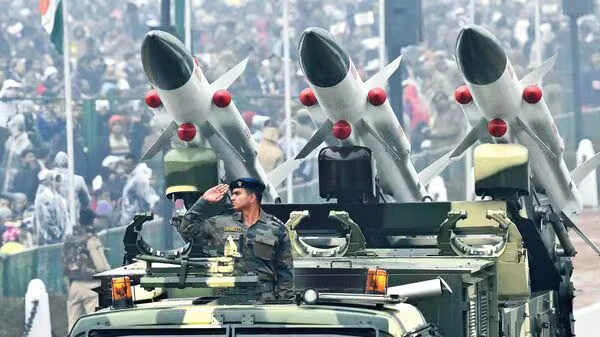India’s defence sector is to get a record-breaking financial boost, with government sources confirming an additional Rs 50,000 crore allocation in the aftermath of Operation Sindoor. This supplementary funding, expected to be approved in the upcoming Winter Session of Parliament, will take the total defence outlay for 2025-26 beyond Rs 7 lakh crore, marking a new milestone in the country’s military preparedness.
The Union Budget for 2025-26 had already earmarked a historic Rs 6.81 lakh crore for the armed forces, reflecting a 9.2 per cent increase over the previous year’s Rs 6.22 lakh crore. Now, with the proposed supplementary budget, the defence allocation will see its highest-ever jump, making up about 13 per cent of the national budget and cementing its place as the largest allocation among all ministries.
This extraordinary increase comes in direct response to the recent security situation along the western border. Operation Sindoor, launched in retaliation for the April 2025 Pahalgam terror attack, saw the Indian Armed Forces conduct precision strikes against nine terror infrastructure sites in Pakistan and Pakistan-occupied Jammu & Kashmir, without crossing the Line of Control or international boundary. The operation was notable not only for its effectiveness but also for its symbolism, being named as a tribute to the widows of the victims, and for the seamless coordination between the Army, Navy, and Air Force.
Defence Modernisation
Operation Sindoor showcased the Indian military’s growing technological prowess and self-reliance. Indigenous systems like the Akash missile defence system, along with the Russian S-400 ‘Triumf’ and Barak-8 medium-range SAMs, played a decisive role in neutralising incoming drones and missiles from across the border. The Indian Air Force also demonstrated its edge by bypassing and jamming advanced foreign-supplied air defence systems. Advanced weaponry, including SCALP cruise missiles and loitering munitions, enabled high-precision strikes with minimal collateral damage.
Prime Minister Narendra Modi, in his address following the operation, highlighted that the credibility of ‘Made-in-India’ weapons had been firmly established, and the world now recognised India’s capability to deploy indigenous defence equipment in modern warfare. The successful integration of advanced air defence and electronic warfare systems during Operation Sindoor drew comparisons to Israel’s Iron Dome, further enhancing India’s reputation on the global stage.
The new Rs 50,000 crore budgetary push will be directed towards strengthening key areas such as research and development, procurement of advanced weaponry, ammunition, and essential military equipment. It will also support the continued development and deployment of indigenous technologies, ensuring that India maintains a technological edge in the face of evolving security threats.
Since 2014, the NDA government has made defence modernisation a central focus, nearly tripling the defence budget from Rs 2.29 lakh crore in 2014-15 to this year’s Rs 6.81 lakh crore, even before the supplementary increase. This sustained commitment reflects the government’s resolve to respond robustly to asymmetric threats and protect both military personnel and civilians.
In summary, the proposed Rs 50,000 crore defence budget boost post-Operation Sindoor signals a new era for India’s armed forces-one marked by enhanced capability, greater self-reliance, and a clear message of deterrence to adversaries. The move is expected to further strengthen national security, accelerate indigenous defence production, and ensure that India remains prepared for any future challenges.


